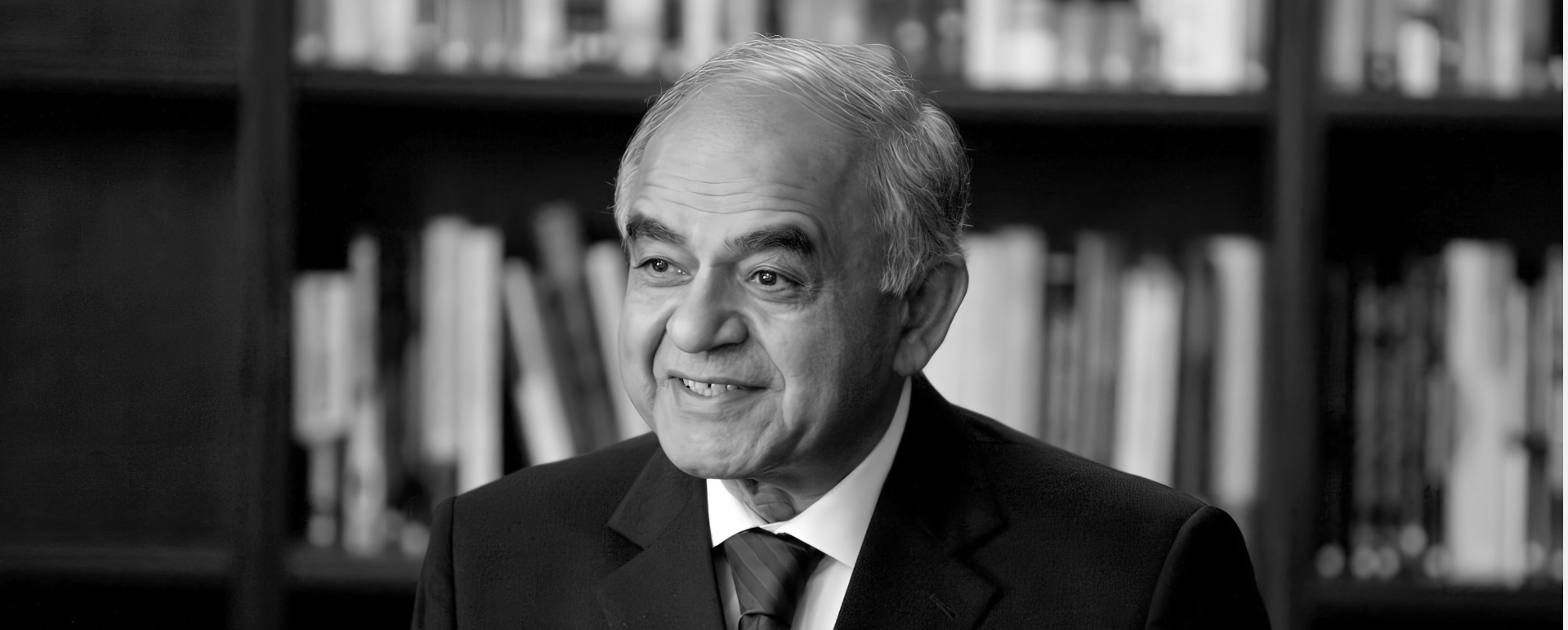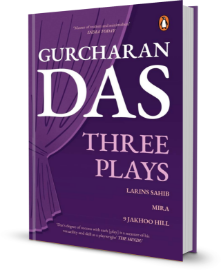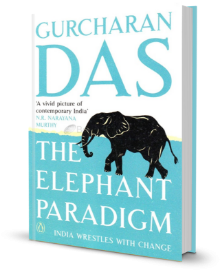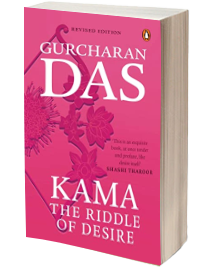

Three Plays: Larins Sahib; Mira; 9 Jakhoo Hill
The first of the three extraordinary plays written by Gurcharan Das in his twenties is Larins Sahib, a historical play set in the 1840s -- a confused period after the death of Ranjit Singh when the British first arrived in the Punjab. The second play is Mira, which explores what it means for a human being to become a saint through the story of Mirabai, the sixteenth-century Rajput princess-poet. 9 Jakhoo Hill, the third play in this volume, is set in the autumn of 1962 in Simla. It examines a number of themes, including the changing social order with the rise of a new middle class (while the old class foolishly clings on to spent dreams), the hold of Indian mothers on their sons, and the eventual betrayal of sexual hurt. This trio of unusual plays will fascinate readers and theatre buffs a like.




1) "The prize-winning play, Larins Sahib, has solid dramatic substance. It is professionally constructed and shaped by historical material. In its balance and proportions, its clear-cut characters, in the discretion, discipline and relevance to its ideas, time and place, Larins Sahib attains all its author's objectives.
--The Times of India (Nissim Ezekiel), November 24, 19682) "One can see why Larins Sahib won the Sultan Padamsee Prize…beautifully structured, with simplicity, carving out the development of one man's character. The dialogue is lucid and dramatic…like a delicate instrument in a surgeon's hand. We feel the ineffable thrill of tragedy.
--Enact Magazine, December 19703) "To show men and women alive in a past epoch…and behaving as they must have behaved, to present the spirit of the times is a rare achievement. The playwright takes up one of the most important episodes in Indian history and makes it warm, excitingly alive…And so, as the curtain rings down we have been transported into another world."
--The Tribune, Chandigarh, 27 February 19724) "The storyline of Larins Sahib concerns itself with human relationships more than actual history. Lawrence is an interesting character with many dimensions. He was very sympathetic to the Sikhs. But no matter how much he adapted himself to India and the ways of the 'natives', he could never be one of them. This was for me the best thing about his character….no matter how much he tries to avoid it, the Englishman in him surfaces and is at odds with the Sikhs. I thought this was very credible. Sad, but true."
--Indian Express, Bombay, 10 August 1991.5) "Larins Sahib is a grand, yet simple play. It has a historical setting, yet it does not deal as much with history as with human emotion. It is the story of an obsession…of Henry Lawrence with the Punjab, and more particularly with Ranjit Singh…Caught between two cultures, he lost out both ways: he was too English for the Indians…his Indian sympathies put him beyond the pale as far as the British establishment was concerned. Finally, entangled in a web of political expediency, and entrapped in his own self-deluded mind, he is transferred in disgrace.
--The Independent, Bombay, 15 October 19906)"Remarkable in the way it combines Indian legend with the sophistication of Western total theatre…[It] has something of the quality of a dream ritual. The language has a plaintive poetry to it, and what the play lacks in immediacy it makes up in pathos. Mira, you feel, is a modern woman being broken on the wheels of convention… It has all the grace of a lovely voice speaking of eternals in a language just delicately opaque."
--New York Times, June 3, 1970 (by Clive Barnes)7)"But by all that is noble and true, Mira is an artistic achievement of immense merit and supreme significance to the re-blossoming of the theatre in India…A rare, beautiful experience, watching and listening to Mira; One came out of the theatre cleaner, more joyous, and several centimetres taller."
--The Times of India, 8 MARCH 19728) "MIRA…is an enchanting fable based on the life of a young princess who lived in North India in the early 16 th century….The very talented Mr Das is a simple writer whose work is filled with lovely poetic images: his lines often emerge like a song, the writing recalling Satyajit Ray's Apu trilogy."
--Show Business (by Joyce Tretick) 30 May 19709) "A Look at Sainthood: The depth of the word was heightened not by the nuance of acting or the involvement of the body but in the sheer rendering of the lines, aided by silhouettes on a silver screen by shadowed music and to the bare accompaniment of the flute and visual images from slides, casting pictures in parallel…Whether it was a fusion between the human voice, music and painting, the effect was abiding…Padamsee's production of Mira provides a new dimension to theatrical activity…"
--Indian Express, 12 November 197210) "During the autumn of discontent of a once wealthy clan, 9 Jakhoo Hill broods over better days…[It is about] the hold that mothers have over their sons, a family coming down in the world…[There are] remnants of the Raj, disillusionment with politics. Sixties? The script is here and now."
--India Today, June 30, 199611) "A FINE ADDRESS IN SIMLA: Gurcharan Das has managed to enclose within the confines of a single Simla address a certain segment of our society that was grappling with itself as an old order was giving way to inevitable transformations.
--The Times of India, New Delhi, June 9, 199612) "This gift of an Indian play is like sinking into a warm bath on a cold night. Not that the play deals with easy stuff but it moves adeptly from the body politic to the individual heart…it is deceptively fluid and haunting. I think it is a must. Why? Mainly because it is a simultaneous exploration of national change and changes in the way people feel, move and have their beings…The play is compassionate and wise.
--The Sunday Independent, 14 July 2004, Johannesburg, South Africa.13) "Gurcharan Das' play is a Chekov-Albee-Tennessee Williams blend of splintered relationships in a partitioned nation. Moments of high drama alternate with quiet shattering of the psyche as two families from Lahore try to survive in independent India….The play builds many metaphors—the broken ties mirror the Partition, loss of home is loss of dreams, the betrayal of trust in the Indo-Chinese War, reversals on the war front…"
--The Hindu, 15 August 2005, Chennai14) "Fading aristocracy clinging foolishly to spent dreams, an embittered, idealistic scholar hopelessly dependent on a young girl, whose arching desire for Bombay is a fierce cry in a play suffused with longing for the 'other', for escape from an incestuous small town society….9 Jakhoo Hill is about a rich family from Lahore, which by 1962 has been reduced to auctioning off paintings and chandeliers to fend of debtors…Into this world of wasting descend Chitra and Deepak…"
--Hindustan Times, Delhi, 19 June 1996